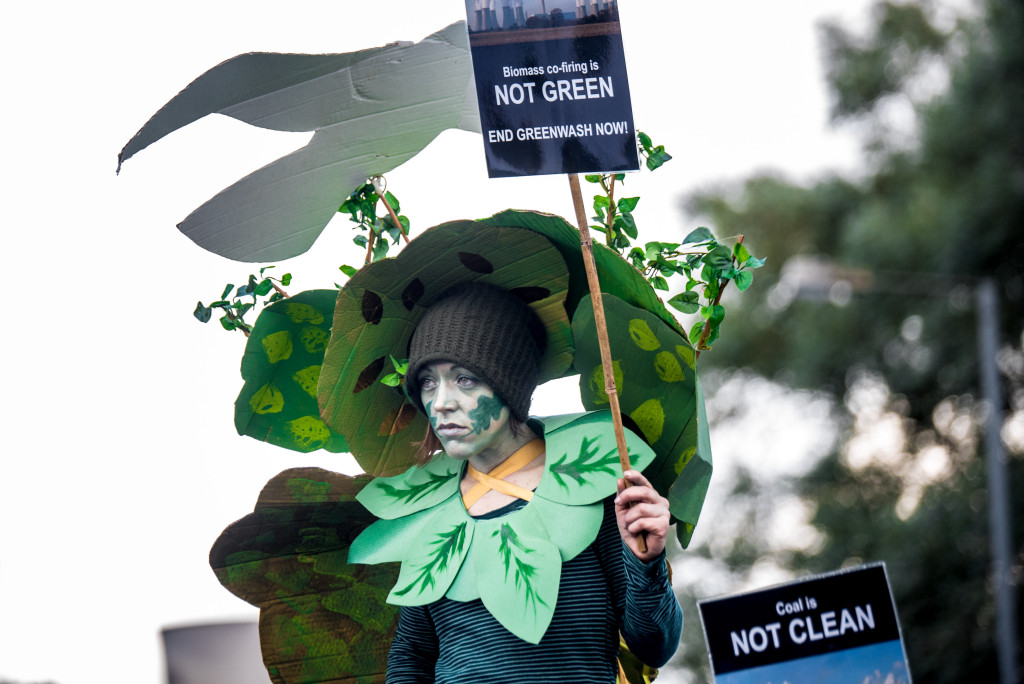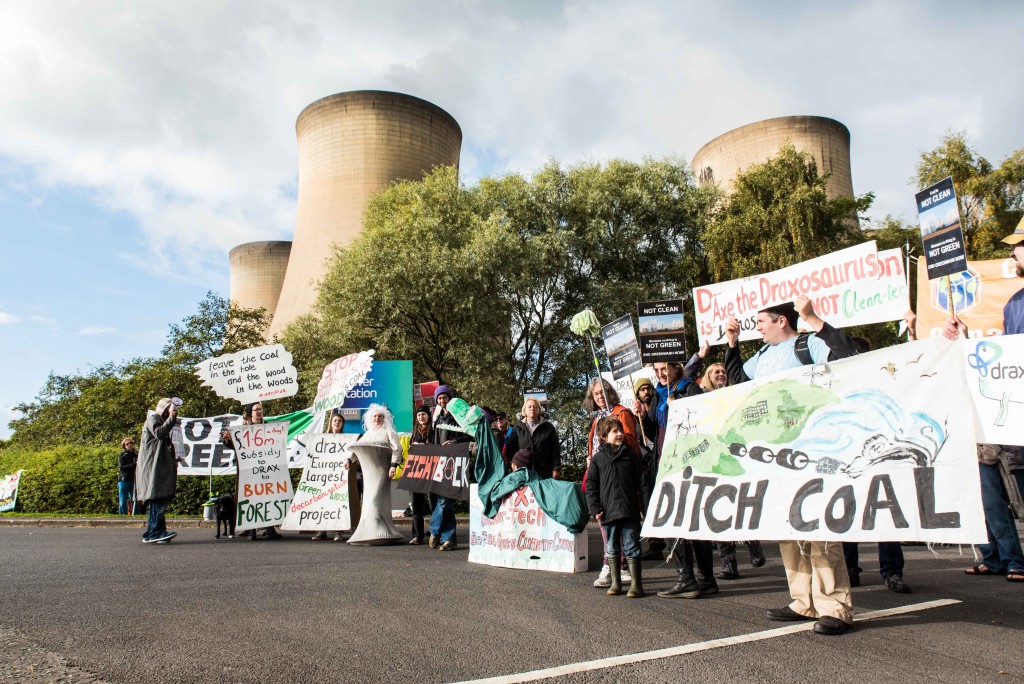It’s 10 years since an audacious attempt to shut down UK’s worst polluter

10 years ago, 600 people converged on Drax Power Station in Yorkshire for the first ever Camp for Climate Action. They were there because Drax, then burning 13 million tonnes of coal and year and emitting over 20 million tonnes of CO2 a year, was the single largest contributor to climate change in the UK – as Corporate Watch noted in 2006, Drax alone emitted more CO2 than 100 countries.
During those few August days in 2006, the protesters, or protectors if you prefer, were not able to shut down Drax. However, they did launch a campaign of radical action against climate change, which has had many successes since; over the following years, there were Climate Camps at Heathrow, Kingsnorth, Blackheath, Coelbran (an opencast coal mine), and at the RBS headquarters in Edinburgh. Kingsnorth coal-fired power station has not been expanded, and the plans have been permanently shelved. There is no third runway at Heathrow. Coal burning in the UK has declined dramatically, and its complete phase-out in the next 10 years looks very possible. A new generation of climate activists are taking direct action against fracking, oil sponsorship and fossil fuel investments.
However, some things have remained the same – unfortunately, Drax is still operational and still the single largest emitter of CO2 in the country; but now, half of Drax’s units burn 6 million tonnes of coal a year whereas the other half burn 6 million tonnes of wood pellets. Drax has generated great publicity for its part-conversion to biomass burning, rebranding themselves as a ‘clean’ ‘green’ ‘renewable energy power station’, and stating it’s ‘Europe’s largest decarbonisation project’.
These claims are untrue. If you look at the CO2 emissions coming out of the smokestacks, burning wood actually produces more per unit of electricity than burning coal. However, the government allows Drax and other energy companies to disregard those stack emissions, based on the spurious claim that future trees will reabsorb all of that CO2 again. But even in the most optimistic case it takes minutes to burn a tree and decades for another to grow, and in reality, when biodiverse forests are being clearcut for bioenergy (as is happening with Drax), they may never be allowed to regrow. So at best, burning wood raises CO2 levels in the atmosphere for the next few decades – precisely at the time when scientists warn that emissions must be drastically curbed – and at worst, forest ecosystems which have been sequestering centuries of CO2 emissions from fossil fuel burning will be destroyed forever.
Drax’s 6 million tonnes of wood pellets are made from 12 million tonnes of wood. Virtually all of this is imported, with only 2% originating from the UK. The majority comes from the Southern US, where investigations by NGOs have revealed pellet companies sourcing wood from the clear-cutting of highly biodiverse wetland forests, and Drax themselves confirmed in a technical report that their boilers can only run on wood from slow-growing whole trees. Drax is the single largest biomass burner in the world, burning 1 million more tonnes than the UK produces in a year – it’s simply not possible for this to all be from forestry residues.
Drax reassures us that these concerns can be safely ignored because all its biomass sourced is verified by the ‘Sustainable Biomass Partnership’ – except that the SBP is chaired by Drax’s own Chief Executive and governed entirely by energy companies.
Last year Drax was paid £470 million – that’s £1.3 million a day – in renewable energy subsidies, whereas it only made £46 million in profit, Clearly, without these subsidies Drax would not be able to survive and would have closed years ago. The great irony is that these subsidies allow Drax to stay open and continue burning huge volumes of coal – Drax say they intend to continue burning coal to at least 2032. Some the the coal burned in the UK comes from the UK, and the rest is imported from the US, Russia and Colombia.
Coal’s effect on the climate is well known, but wherever coal is mined, the effects on local communities are devastating: in Russia’s main coal mining area, indigenous peoples are being evicted from their ancestral lands. In Colombia, coal-exporting companies have been implicated in paramilitary murders and disappearances, and whole villages are moved to make way for the mine with no compensation. US companies which export coal to the UK use mountaintop removal and other destructive practices, and here in the UK opencast mines destroy swathes of ecosystem and severely impact the health of local residents.
Clearly, it’s no better whether Drax burns biomass or coal. There can be no climate justice whilst Drax still runs – the only sustainable option for Drax is its immediate closure. Its vast, undeserved subsidies must be removed and poured instead into truly low-carbon options like sustainable wind and solar power, and we need massive investment in new energy infrastructure and, very importantly, energy efficiency and demand reduction. All the science points to a massive and rapid reductions needed in CO2 emissions in the next few decades – we don’t have the time or patience for any more false solutions and greenwash. Drax currently produces 7% of UK electricity – cutting its subsidies and closing it would be a huge step in the direction of the kind of energy transition required to tackle the climate threat.
We’ve accomplished a lot in the past 10 years, despite the road sometimes looking dark, but the work of Climate Camp is not yet done.
That is why Biofuelwatch, Coal Action Network and other small climate justice NGOs returned to Drax on 22nd October.

More than 60 people gathered outside Drax Power Station to protest against the power station’s burning of coal and wood – the largest protest at Drax since the 2006′ Climate Camp.
The protest was part of a series of protests worldwide to mark the Global Month of Action Against Dirty Energy. At the demonstration, protesters heard from speakers, including ex-Green Party Leader Natalie Bennett, and heard statements from Russian and Colombian campaigners whose communities have been devastated by coal mining for Drax.
Now it’s time to call for politicians, civil society, shareholders, local people, and anyone concerned about forests, the climate, and the survival of communities – of human and other species – to #AxeDrax.
PS. We hope you enjoyed this article. Bright Green has got big plans for the future to publish many more articles like this. You can help make that happen. Please donate to Bright Green now.

Leave a Reply